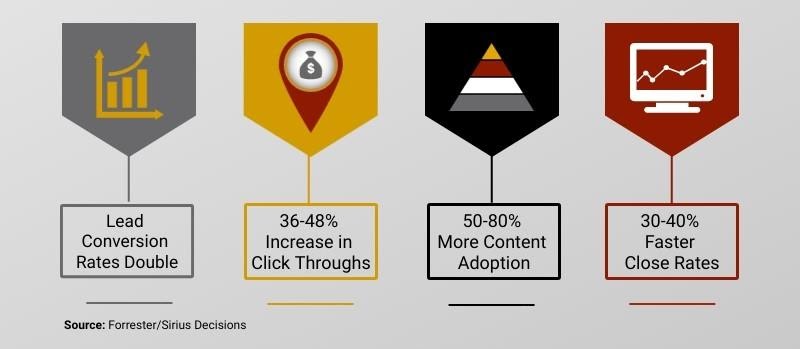The close of 2019 and dawning of 2020 marks several important events, in addition of course to the holidays. Tis the season to be insightful, as the business world launches its annual rite of strategic marketing planning. Deck the boardrooms with white boards and sticky notes! Gotta get that new marketing plan in place and blasted out to the team to start the New Year with a bang.
And everyone will rally behind this brilliantly conceived plan, leveraging its insights and directives as catalysts for driving sales and profits to new heights. Right?
Wrong. According to Wyatt Wells, professor at Auburn University and author of the forthcoming book, “Permanent Revolution: Reflections on Capitalism,” strategic planning as it is practiced in most US businesses is a fraud, basically a PR endeavor telling staff what they already know. That is why most of your staff will embrace the document that is the product of months of work, smile, and chuck it into the trash when they return to their offices. In a recent opinion article in the Wall Street Journal, Wyatt maintains that companies use these plans to ‘enhance consumers’ experience’ – as though believing that competitors want to aggravate customers and staff!
Doomed to fail
Here’s the dirty little secret about these ambitious strategic marketing plans. Even the planners holed up for weeks and months creating them detest the process, probably because they foresee their eventual fate in circular files everywhere. By and large they’re doomed from the outset for one simple reason: Either they start and end with solely company-focused goals (“let’s boost market share 25%”). Or the customer and the customer experience are secondary, if addressed at all.
This approach is lethal, in the negative sense. Consider this data harvested by Salesforce in a recent quantitative study of 8,000 buyers in 16 countries. Think your buyers are interested primarily in the capabilities of your products and services? Think again, because a whopping 84% of buyers polled said their buying experience outweighs the importance of capabilities, speeds and feeds, even price. And most buyers – 51% – told Salesforce that vendors don’t understand their needs and expectations.
What are buyers really saying?
These findings closely mirror direct quotes we get from thousands of buyer interviews with C-suite executives, no doubt frustrated by sales and marketing efforts driven by misguided strategic plans. “I hate when vendors don’t take us seriously. They just put together a cut and paste of what they think is right. That’s not a good thing. If you’re just throwing crap on the wall, we can see through it and we’re not going to take you seriously.”
Buyers are smart enough to know that many of these grandiose plans vendors hatch really have the process bass-ackwards. Consider this observation from another of our C-suite interviews. “They weren’t interested in fitting their solutions to our needs. They wanted us to accommodate them, and we wanted to be accommodated if we’re the ones spending large sums of money.”
I didn’t have to search too long or hard to find these quotes from the in depth interviews we conduct. Vendors clearly out of touch with buyers’ most pressing needs chronically frustrate buyers who are anxious to avoid making the wrong buying decision.
Here’s the format for a successful marketing plan — Start with buyer interviews to understand what buyers want. Then prioritize sales and marketing efforts that make it easier for buyers to learn how you address each of their questions and concerns.
Sounds easy, right? It could be, if you first employed the proper listening techniques to know from the outset whether there is a suitable match between a buyer’s needs and your company’s capabilities.
Dare to think differently
Start by thinking out of that accursed box known as the strategic marketing plan, and instead into developing a 2.0 buyer persona for the people who are evaluating solutions like yours. That’s what I told a packed room at the Dreamforce 2019 conference in November. If you design your sales and marketing plans with insights into what buyers want to know and experience during their engagement with you, your plan is defensible. The next time someone has a “better” idea, you can confidently state that the plan is focused on tactics and strategies that resonate with your buyers.
The only consistently reliable way to understand the important details about your buyer’s evaluation and buying experience is to conduct in depth interviews with real buyers who actually made a recent purchase. Most won’t be your customers, but rather buyers who chose competitors. Remember, the market is filled with buyers who either don’t need or didn’t choose you. You need to know why.
Go deeply into the heads of real buyers
In depth interviews conducted by highly skilled interviewers yield vital insights of the risks buyers perceive in making a big purchase. Moreover, these interviews reveal how certain vendors allay these risks and persuade buyers to choose them.
These interviews also unmask the sources buyers tap into in making high-risk buying decisions. Here’s a tip: maybe a third rely heavily on Google searches. Most turn to their peers. Wouldn’t you like to know what information they sought from these peers? How useful would that information be in developing sales and marketing strategies that’s actually aligned with what the buyer wants to know and experience?
Perhaps most importantly, these interviews will show exactly why certain vendors were excluded from the final buying decision. Many if not most sales people believe the chief criterion is price. In fact, that rarely shows up in the top three! So if your strategy is selling on price, you’re leaving money on the table and selling your value short.
Now ask yourself, have you ever read any such insights from a strategic marketing plan? This is information that is an essential window into the real needs of markets full of buyers, who together will respond favorably to a unified strategy allied with their specific needs.
Only through buyer interviews will your sales and marketing teams know where and for whom your solutions fit, and for whom it does not. Armed with the right buyer persona information, sales and marketing can align to deliver the buying experience that earns your buyers’ trust, and their business.





